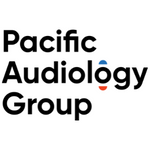Part 1: Community Coordination for Ototoxicity Monitoring
An ototoxicity monitoring program involves more than just performing hearing tests; it necessitates building inter-professional collaborations to facilitate timely referrals of at-risk individuals, ideally before they begin treatment with ototoxic medications. This requires developing materials such as brochures or one-pagers that clearly outline the details of the testing services you provide, including the costs involved, and providing referral pads to local healthcare providers. Your clinic must ensure appointment availability to accommodate referred patients promptly; strategies like block scheduling can help manage your schedule to allow for these patients.
Part 2: Baseline Testing
A baseline hearing test is a key component of the monitoring program, and this requires a full diagnostic test battery, including immittance and speech testing, in addition to standard pure-tone audiometry.
If your ototoxicity monitoring program incorporates high-frequency audiometry (HFA) or otoacoustic emissions (OAEs), these assessments should also be included in the baseline evaluation.
Ideally, the baseline test would be performed prior to ototoxic exposure. Sometimes this can be challenging if treatment is emergency-based and begins at the time of diagnosis. Fortunately, for platinum-based chemotherapy agents, which are among the most common ototoxic medications, there is usually advanced notice of treatment that allows for time to book a baseline test. There is one exception: for aminoglycosides, another major class of ototoxic drugs, administration is often emergency-based, but the ototoxic effects of aminoglycosides are usually not immediate, making a baseline test feasible within the first 72 hours after treatment.
HFA & OAEs as Options for Baseline Testing:
Both HFA and OAEs are options ototoxicity screening programs. What’s important here is that if you are using either of these to monitor thresholds, they must be performed at the initial assessment.
Since ototoxic drugs tend to affect the high frequencies first, incorporating extended high-frequency audiometry (HFA), which can reach 16 to 20kHz, into your baseline protocol can provide more detailed monitoring of the upper-frequency limit of hearing. However, it’s important to be aware of the limitations of high-frequency audiometry, which include specialized equipment requirements, the possibility of pre-existing hearing loss or noise exposure affecting thresholds in this range, and middle ear pathology, as bone conduction thresholds cannot be tested in those regions. HFA also requires a longer test battery.
Otoacoustic emissions (OAEs) offer an objective, quick, and efficient alternative to audiometry. While both TEOAEs and DPOAEs are suitable, DPOAEs may be better suited for ototoxicity monitoring as they can be detected at higher frequencies. Limitations of OAEs include the influence of pre-existing hearing loss and middle ear pathology.
Research has suggested that HFA may be more sensitive than OAEs to initial changes from ototoxic medications, but OAEs are more sensitive than conventional audiometry. In practice, the most robust program may include both OAEs and HFA at the initial assessment, using one or the other for follow-up, depending on clinical judgment. Not having access to these advanced tools does not preclude providing an ototoxicity monitoring program; you can still offer a valuable service using conventional audiometry, although it is not as sensitive.
Part 3: Monitoring Testing
Follow-up monitoring does not require a full diagnostic test performed at each visit; rather, it involves a threshold check of those thresholds that have been established at baseline to monitor for change. Options for follow-up testing include conducting a pure-tone air conduction screening or screening of the sensitive range for ototoxicity or SRO.
The SRO is defined as the limited frequency range that is most sensitive to ototoxicity insult. Specifically, the SRO is the range between the highest frequency with a threshold at or below 100 dB SPL, and the subsequent lower six adjacent frequencies, measured in 1/6th octave steps, or the one-octave range below the highest audible frequency. Using the SRO offers the advantage of time savings.
When to Test:
When to perform follow-up tests is an important consideration. For patients receiving platinum-based chemotherapy agents, follow-up testing should be performed just before each course of treatment and then again a few months after treatment has stopped. For patients receiving IV-administered aminoglycosides, follow-up testing should be conducted weekly or bi-weekly during treatment and then again a few months after treatment has stopped.
Criteria for Change:
It is helpful to have clear criteria for determining a significant change in hearing function. According to ASHA’s 1994 guidelines, for audiometry, significant change is defined as:
- 20dB or more decrease at any one test frequency.
- 10dB decrease at any two adjacent frequencies.
- Loss of response at three consecutive frequencies where responses were previously obtained.
In terms of OAEs, changes in DPOAE amplitude of 2.4 dB or more are considered significant (Young & Ng, 2023).
If a significant change is observed based on these criteria, then a full diagnostic test should be performed within 24 hours if possible.
If you found this blog helpful, please share it on social media! If you would like to learn more about drug-induced ototoxicity and monitoring, please see our free course in our Learn On platform, Ototoxicity 101: Identification and Monitoring.
References
American Academy of Audiology. American Academy of Audiology Position Statement and Clinical Practice Guidelines: Ototoxicity Monitoring. 2009. Available from: https://www.audiology.org/wp-content/uploads/2021/05/OtoMonGuidelines.pdf_539974c40999c1.58842217.pdf
American Speech-Language-Hearing Association. (1994). Guidelines for the audiologic management of individuals receiving cochleotoxic drug therapy. ASHA 36 (Suppl 12):11-19.
Steyger PS. Mechanisms of Ototoxicity and Otoprotection. Otolaryngol Clin North Am. 2021 Dec;54(6):1101-1115. doi: 10.1016/j.otc.2021.08.007. PMID: 34774227; PMCID: PMC8597902.
Joo Y, Cruickshanks KJ, Klein BEK, Klein R, Hong O, Wallhagen MI. The Contribution of Ototoxic Medications to Hearing Loss Among Older Adults. J Gerontol A Biol Sci Med Sci. 2020 Feb 14;75(3):561-566. doi: 10.1093/gerona/glz166. PMID: 31282945; PMCID: PMC7328195.
Curhan SG, Shargorodsky J, Eavey R, Curhan GC. Analgesic use and the risk of hearing loss in women. Am J Epidemiol. 2012 Sep 15;176(6):544-54. doi: 10.1093/aje/kws146. Epub 2012 Aug 29. PMID: 22933387; PMCID: PMC3530351.
Curhan SG, Eavey R, Shargorodsky J, Curhan GC. Analgesic use and the risk of hearing loss in men. Am J Med. 2010 Mar;123(3):231-7. doi: 10.1016/j.amjmed.2009.08.006. PMID: 20193831; PMCID: PMC2831770.
Goodhew, A. Otoacoustic emissions (OAEs) for ototoxicity monitoring. Retrieved from: https://www.interacoustics.com/blog/oaes-for-ototoxicity-monitoring
Joo Y, Cruickshanks KJ, Klein BEK, Klein R, Hong O, Wallhagen MI. The Contribution of Ototoxic Medications to Hearing Loss Among Older Adults. J Gerontol A Biol Sci Med Sci. 2020 Feb 14;75(3):561-566. doi: 10.1093/gerona/glz166. PMID: 31282945; PMCID: PMC7328195.
Tan, W.J., & Vlajkovic, S.M. (2023). Molecular Characteristics of Cisplatin-Induced Ototoxicity and Therapeutic Interventions. International Journal of Molecular Sciences, 24.
Joo, Y., Hong, O., & Wallhagen, M. (2016). The risk factors for age-related hearing loss: an integrative review. Ann Gerontol Geriatr Res, 3(2), 1039-49.
Young A, Ng M. Otoacoustic Emissions. [Updated 2023 Apr 17]. In: StatPearls [Internet]. Treasure Island (FL): StatPearls Publishing; 2023 Jan-. Available from: https://www.ncbi.nlm.nih.gov/books/NBK580483/




